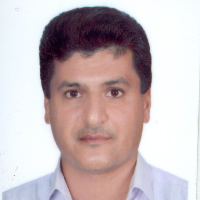Spatial monitoring of solar radiation energy in Sirjan basin
IntroductionEnergy is considered to be one of the most important factors affecting the development of human societies and also an essential parameter in economic and social development along with the quality of life. Population growth, rising living standards, the risk of global warming caused by greenhouse gas, acid rain, environmental problems and threats to human health, lack of fossil energy sources and rising energy consumption have increased interests in renewable energies. Solar energy has been used as a source of renewable energy for a long time. As one of the safest, most efficient and most economical sources of energy, it has the potential to become the main energy source in the near future (Dincer, 2000: 157). Due to the high number of sunny days, Iran is among the countries receiving the highest level of solar radiation in the world. With 240 to 250 sunny days per year, approximately 80 percent of the country receives an average annual solar radiation of 4.5 - 5.4 kWh / m² (Moghadam et al, 2011: 107). In this regard, the present study seeks to evaluate and monitor radiant energy reaching the surface of Sirjan basin. Materials & MethodsThe study area, Sirjan Basin, is located between 28 degrees and 46 minutes and 50 seconds to 29 degrees and 58 minutes and 1 second northern latitude, and 55 degrees and 11 minutes and 20 seconds to 56 degrees and 32 minutes and 40 seconds eastern longitude. It includes 18481 square kilometers with an average altitude of 1710 meters above sea level. Descriptive-analytical method has been used in the present applied research. Data are collected using library and documentary research methods (from information and statistics offered by different organizations) or extracted from satellite images. Solar radiation energy reaching to the surface of the study area has been evaluated using three methods including Angstrom experimental model, Solar Analyst method in GIS and Remote Sensing. Results & DiscussionAngstrom experimental model indicates that the maximum amount of energy directly received by the basin at low latitudes (28 degrees and 50 minutes) is 73370-73436 watts per square meter. This decreases as we move toward higher latitudes reaching 72836-72903 watts per square meter in the northern parts of the basin (latitude 29 degrees and 50 minutes). Monitoring solar radiation energy reaching the surface with GIS Solar Analyst (solar radiation analysis method) shows that the lowest amount of radiant energy reached the surface in January (between 14000 to 144039 watts per square meter). Also, the maximum amount of radiant energy reached the surface in July (between 111000 to 252000 watts per square meter). Remote sensing technique also shows that the amount of instantaneous radiation received in Sirjan basin reaches its minimum during winters and only a limited part in the west of the study area receives 4.498 to 8.436 watts per square meter. The maximum amount of instantaneous radiation received in summers is 597.6 to 845.6 watts per square meter, which is received in a large part of the west, northwest and southwest of the basin. ConclusionMonitoring radiant energy reaching the surface of Sirjan basin using experimental Angstrom model shows that the highest level of energy received in the southern parts of the basin is around 733370 to 73436 watts per square meter. This is reduced moving toward the northern parts of the basin. Moreover, solar radiation analysis method (Solar Analyst in GIS) shows that the highest amount of solar energy in Sirjan Basin is received in July with 200000 to 252000 watt-hours per square meter , June with 170000 to 248341 watt-hours per square meter, May with 190000 to 247627 watt-hours per square meter and August with 190000 to 234500 watt-hours per square meter, respectively. These values are recorded in eastern, northeastern and southeastern parts of the basin. Results indicate that the eastern half of the basin in which the cities of Balvard, Tekiye, Saadatabad and Pariz are located, receives the highest amount of solar radiation energy especially in summer. Remote sensing technique shows that the highest amount of instantaneous radiation received in summer is 597.6to 845.6 watts per square meter which is recorded in the western, northern, northwestern, southern and southern parts of the region including the villages of Pariz, Saadatabad, Balvard in the central strip and Khatunabad, Mahmoudabad, Najafabad, Malekabad and Golestan. The same is also recorded in other seasons, though with a decreasing trend. The highest level of instantaneous radiation is received in these parts of the basin.
- حق عضویت دریافتی صرف حمایت از نشریات عضو و نگهداری، تکمیل و توسعه مگیران میشود.
- پرداخت حق اشتراک و دانلود مقالات اجازه بازنشر آن در سایر رسانههای چاپی و دیجیتال را به کاربر نمیدهد.



